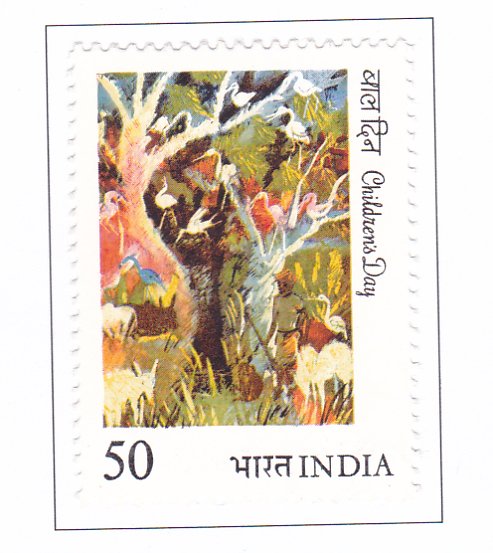Children’s Day 1984

Technical Data
| Stamp Set | Children's Day |
|---|---|
| Date of Issue | November 14, 1984 |
| Denomination | 50 p |
| Quantity | 1,500,000 |
| Perforation | comb 13 x 13¼ |
| Printer | Security Printing Press, Nashik |
| Watermark | No Watermark |
| Colors | Multicolor |
| Catalog Codes |
Michel IN 1004 Stamp Number IN 1070 Yvert et Tellier IN 819 Stanley Gibbons IN 1137 |
| Themes | Children | Drawings |
Children’s Day: A Tribute to Pandit Jawaharlal Nehru and India’s Future
Children’s Day, celebrated annually on November 14th, commemorates the birth anniversary of Pandit Jawaharlal Nehru, a visionary leader and architect of modern India. Nehru’s profound belief in the importance of nurturing children as the cornerstone of a nation’s future resonates deeply on this occasion.
Pandit Jawaharlal Nehru’s Vision
- Nation Building: Nehru was instrumental in shaping India’s destiny, envisioning a future that was not just about the present but focused significantly on the upcoming generations.
- Children as Assets: He famously emphasized that children are the future architects of civilization and must be safeguarded and empowered to fulfill their potential.
Challenges Faced by India’s Children
- Social and Economic Realities: Despite Nehru’s aspirations, contemporary challenges persist:
- Poverty: A significant portion of India’s child population lives below the poverty line, with stark disparities between urban (45%) and rural (55%) areas.
- Child Labor: Around 16.3 million children are engaged in labor, compromising their education and future prospects.
- Education: Less than 5% of India’s children have access to proper schooling, highlighting a critical need for educational reforms.
- Health Issues: Issues such as malnutrition, physical disabilities, and preventable diseases like Vitamin A deficiency pose severe health risks.
- Mortality Rates: Shockingly, over a million children aged 1-4 years succumb annually to illnesses, underscoring the urgent need for healthcare improvements.
- Starvation: UNICEF reports reveal that approximately 100,000 children die each month due to starvation, painting a grim picture of the challenges faced.
Call to Action and Commemoration
- Collective Responsibility: Addressing these issues requires concerted efforts from policymakers, NGOs, social workers, and experts to ensure children’s fundamental rights to love, care, education, and a nurturing environment.
- Role of Stamps: The issuance of special postage stamps on Children’s Day by the Indian Posts & Telegraphs Department serves as a powerful medium to raise awareness and mobilize support for children’s welfare issues across India.
- Moral Imperative: It is incumbent upon all individuals to uphold children’s rights and ensure their harmonious coexistence in society, thereby enabling them to become productive members of the community.
Conclusion
Children’s Day is not merely a commemoration but a solemn reminder of our collective responsibility towards nurturing and safeguarding India’s future. Pandit Jawaharlal Nehru’s legacy inspires us to redouble our efforts in addressing the challenges faced by our children and to build a society where every child can thrive and contribute meaningfully.
This Children’s Day, let us reaffirm our commitment to creating a better future for India’s children, guided by the principles of compassion, education, and opportunity.
